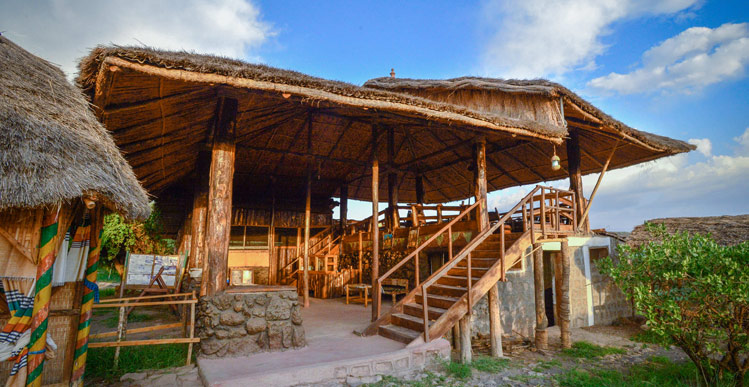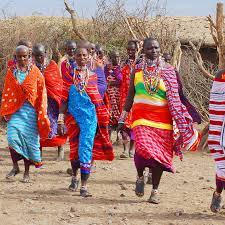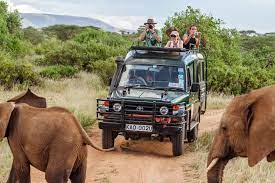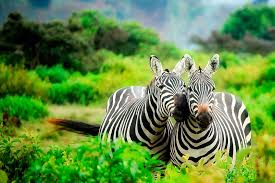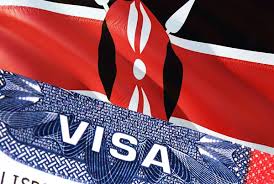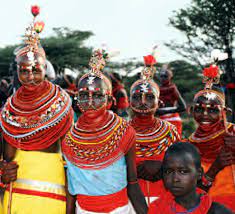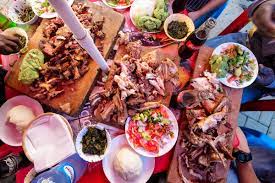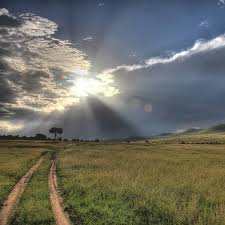Overview
Amboseli National Park is located in Loitoktok District, Rift Valley Province of Kenya. The park is 39,206 hectares (392 km2; 151 sq. mi) in size at the core of an 8,000 square kilometres (3,100 sq. mi) ecosystem that spreads across the Kenya-Tanzania border. The park is famous for being the best place in Africa to get close to free-ranging elephants among other wildlife species. Other attraction of the park includes opportunities to meet the Maasai people and also offers spectacular views of Mount Kilimanjaro, the highest free-standing mountain in the world. In Amboseli’s case it is big skies and far horizons combined with swampy springs and dry and dusty earth trampled by hundreds of animals. Amboseli has an endless underground water supply filtered through thousands of feet of volcanic rock from Kilimanjaro’s ice cap, which funnel into two clear water springs in the heart of the park. However, the climatic pendulum can swing from drought to flood, and in the early 1990’s ceaseless rain changed Amboseli into a swamp. A few years later the rains failed and the grass-covered plains turned to dust.
Best Time to Visit
Although Amboseli can be visited at any time of year it is recommended to go in the dry months, which are from June to October and January to February. The short rains peak in November and the long rains in April and May – these months are not recommended for wildlife viewing. During these wet months, animals tend to spread out and are less inclined to come to predictable water sources. Views of Kilimanjaro are hit-and-miss, but chances are best early morning and late afternoon in the Wet season months from November to May, when the sky is clear of dust. Best Time June to September and January to February are best for general wildlife viewing (Little to no rainfall)
High Season December to March & July to October (The reserve can get quite busy)
Low Season April to June (Low season rates may apply)
Best Weather June to September and January to February (Little rainfall)
Worst Weather April (Wettest month)
Getting There
Amboseli is South of the capital Nairobi City.
There are two ways to get to Amboseli National Park.
Drive Driving will take you about 2.5 hours. Getting to Meshanani Gate from Nairobi will take you about 2.5 hours, the road (228 kms) is absolutely beautiful and smooth if you go through Emali, a small town on the main road to Mombasa. Using this route you will enter Amboseli National Park through the Kimana Gate to the East of the park. If you go through Isinya, down the Magadi Road in Nairobi, you will join the Nairobi – Arusha Road (240 kms) and you will soon get to Namanga Town. This is the border town between Kenya and Tanzania. In Namanga there is a fuel station, this is not the best place to go to the toilet. The fuel station may have something half decent. There is a small shop you can get nibbles if you need. Leaving Namanga to the Meshanani Gate will take you about 45 mins to an hour depending on the vehicle you are travelling with. The road is not best by far, they have recently graded it but due to the high traffic volume it is not expected to last long. It is bumpy!
Fly There are a few companies that fly to Amboseli. It takes about half an hour or so. By far the best way to travel, but you do miss out on seeing more of the country. Look out for the old volcanoes.
Activities
There is Kilimanjaro mountain
Bird watching ,
Wild life viewing
And the Masai community { Masai village
Uniqueness
Amboseli was declared a national reserve in 1968. It became a national park in 1974. However, in 2005, President Mwai Kibaki transferred control from the Kenya Wildlife Service to the Olkejuedo County Council and its residents, the Maasai tribe. This is still being contested in the courts because of its implications that could jeopardize Kenya’s other national parks. Amboseli National Park covers 392km² (151miles²) and has a mixed topography of plains, acacia woodland, rocky thorn bush, swamps and marshes. This diversity, along with a long dry season, ensures excellent viewing of the large concentrations of African animals living in this natural habitat. With its awesome view of Mount Kilimanjaro (Africa’s highest mountain at 5,895m), Amboseli National Park offers a unique and breathtaking backdrop for viewing Africa’s animals. It also has a dry Pleistocene lake basin that houses a temporary lake, Lake Amboseli, after the rains.
Amboseli offers some of the best opportunities to see African animals because its vegetation is sparse due to the long dry months. Amboseli National Park is home to wild animals, which include the African elephant, buffalo, impala, lion, cheetah, hyena, giraffes, zebra, wildebeest among other African animals. There is also a host of Kenya birds, both large and small, to see if you keep your eyes open and stop at every sighting. When you arrive at the park, the warden will give you several common sense rules: do not get out of your vehicle, except at designated spots; do not harass the animals in any way; keep to the tracks; no off-road driving; and remember that the animals always have the right of way. The roads in Amboseli have a loose surface of volcanic soil that is dusty in the dry season and impassable in the wet season.

